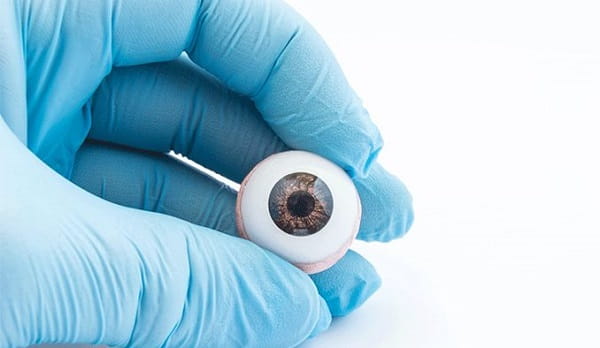It's possible to have a cornea transplant to replace a portion of your eye with donor corneal tissue. In your eye, the cornea is the clear, dome-shaped covering on the front of the lens. A big part of your capacity to see clearly comes from the light that enters your eye.
Restoring vision, easing discomfort, and improving the look of a deteriorated or diseased cornea are all possible outcomes of a cornea transplant.
The vast majority of corneal transplants are a complete success. There is a tiny chance of complications, for instance the donor cornea being rejected.
Why it’s done?

When a cornea is injured, an eye transplant is the most common way to restore vision. Corneal illnesses can be alleviated by a corneal transplant as well as other signs and symptoms.
An eye transplant is used for treating variety of disorders, including:
Transplanting the cornea can cost anything from Rs 50,000 to Rs 1 lakh, and it can only be performed at private sector facilities right now. The health department would be able to provide free corneal transplants to underprivileged patients as a result of the eye bank's establishment.
Before having a cornea transplant, you'll have to go through the following:
To do a cornea transplant, the damaged cornea is removed and replaced with appropriate donor tissue from another eye. Your corneal surgeon will make the final call on which technique to employ during your procedure. Procedures like these include:
Penetrating Keratoplasty- It is a transplant of the entire thickness of the cornea, a little button-sized disc of corneal tissue is removed from the abnormal or damaged cornea by the surgeon. This perfect circular incision is made with the aid of a specialized tool.
The opening is then covered with a donor cornea that has been trimmed to size. Afterwards new cornea is stitched by the surgeon making use of stitches. Your eye doctor may remove the stitches at a later appointment.
Endothelial Keratoplasty- The endothelium as well as a thin layer of material that shields the endothelium from microbial infections and injury are removed during these procedures from the rear corneal layers. The tissue that was removed is replaced by donor tissue.
Endothelial keratoplasty can be divided into two categories. (DSEK) is the first of two types of corneal transplants.
In the (DMEK), the donor tissue is significantly thinner. A delicate, paper-thin tissue is employed in DMEK. This is a more difficult treatment than DSEK, yet it is widely utilised.
Anterior lamellar keratoplasty- It relates to the removing diseased tissue from front corneal layers, such as the epithelium and stroma, but leaving the back endothelium layer in place.
The kind of ALK operation you need depends on the extent of your corneal injury. The healthy stroma & endothelium of your cornea are not removed during (SALK). When corneal damage extends into the stroma, a (DALK) operation is utilized. A donor's healthy tissue is then transplanted onto the area that was surgically removed.
Q1. What Is The Success Rate With Eye Transplants?
Ans: Most of types, the corneal part is transplanted to help the patient to see the world again. And surprisingly, with corneal transplants, the success rate is nearly 95%, which is incredibly awesome. That means, there are higher chances that your surgery will be a success, and to ensure that, always choose the most experienced eye surgeons.
Q2. Will There Be Vision Fluctuations After Eye Transplant?
Ans: Since the healing process of the eye takes some time, therefore, patients have blurry vision in most cases right after the surgery. However, the vision starts to improve gradually and your surgeon will wait for at least 3 to 10 months to check the progress. And usually, people start to have clear vision within a few weeks of the surgery.
Q3. What Does Graft Rejection Mean When Having Eye Transplant?
Ans: Graft rejection is a process of our immune system that reacts against any foreign tissue or cells in the body. However, to ensure there is no graft rejection after the surgery is done, the doctors make sure that it does not happen by doing thorough testing on the organs. This way, your immune system accepts the foreign tissues donated by someone else, and it won’t cause any immune system rejection problems, even years after the surgery or transplant.